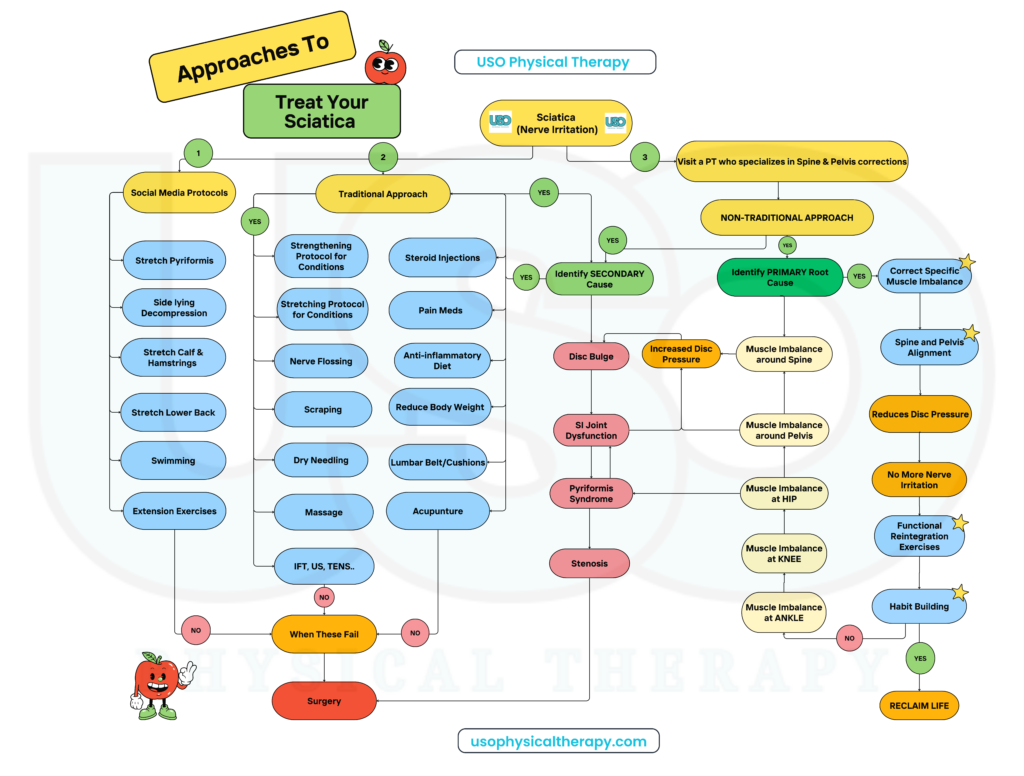
Low Back Pain and Sciatica Treatment in Upland: STOP TREATING THE DISC OR THE NERVE if you suffer with sciatica!
Still struggling with Sciatica Despite Trying Everything?
Have you been diligently stretching, strengthening, nerve flossing, dry needling, cupping, scraping and following countless social media protocols—yet you’re still dealing with sciatica?
If so, you’re not alone. But here’s a crucial question:
Have you actually found the root cause of your sciatica?
Common diagnoses like disc herniation, piriformis syndrome, or spinal stenosis are often blamed—but are they truly the primary cause of your symptoms? (Spoiler: Not always). With proper assessment, working with the right specialist and early targeted intervention, you can prevent progression of a simple disc bulge to irreversible spinal stenosis.
Here’s some food for thought:
Let’s break down one commonly cited cause—disc herniation.
Our Non Traditional Treatment Approach:
It’s often said that disc herniation is the most common cause of sciatica. But what’s actually causing the disc to herniate in the first place?
Remember—sciatica is a symptom, not the cause. So, let’s go beyond the surface to identify and treat the true source of your pain—not just the symptoms.
Yes, disc herniation can be a factor, but in many cases, it may not be the root issue.
For example:
A muscle imbalance anywhere in the lower body (even in the foot) could lead to pelvic misalignment or spinal rotation, placing abnormal stress on the disc—eventually resulting in a herniation.
So, how are you addressing that?
Are you simply managing symptoms (traditional approach) with nerve flossing, back extension exercises, dry needling, cupping or scraping?
Or are you identifying and correcting the underlying imbalances to relieve disc pressure—and ultimately reduce irritation to the sciatic nerve?
Understanding the biomechanics and a thorough assessment is the key.
At Ultimate Spine & Orthopedic Physical Therapy, we focus on understanding the full picture. Our approach is not just about temporary relief—it’s about lasting solutions.
Let’s find out what’s really going on.
👉 Book your FREE 15-minute consultation today and take the first step toward lasting relief. Contact Us
Below is a supporting research article that discusses how dysfunctions in back muscles, including imbalances and altered activation patterns, contribute to chronic low back pain. It emphasizes the importance of individualized exercise programs targeting specific muscle dysfunctions to improve outcomes. Addressing these muscle imbalances is crucial for effective management of chronic low back pain and associated conditions like sciatica.
The Role of Back Muscle Dysfunctions in Chronic Low Back Pain: State-of-the-Art and Clinical Implications.
